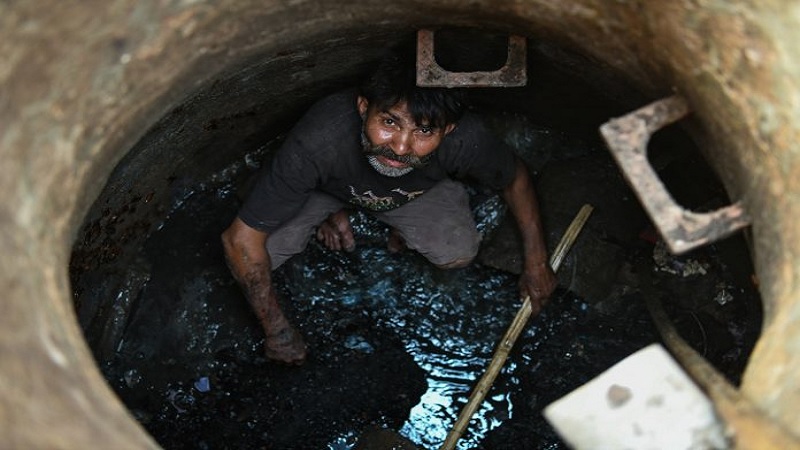 Image Courtesy: theprint.in
Image Courtesy: theprint.in
In response to a question related to manual scavenging, the government said that there are no reports regarding deaths of persons due to manual scavenging but admitted there have been deaths due to cleaning of sewers and septic tanks as recorded by National Commission for Safai Karamcharis. The PUDR report titled “Chronic ‘Accidents’: Deaths of Sewer/Septic Tank Workers, Delhi, 2017-2019” as contended that official bodies have attempted to create a false distinction between the manual scavengers and sewer/septic tank cleaners so as to give priority should be given to manual scavengers. PUDR argues that such official narratives cause sanitation workers to be relegated to the background and questions as to the rights of sewer workers are left out of the debate.
As per data from the Commission, 282 sewer deaths have taken place since 2016 until November 6, 2019 in the country. Out of these, families of 156 deceased persons have received compensation under the provisions of the Prohibition of Employment as Manual Scavengers and their Rehabilitation Act, 2013. That is just bit more than half of the deceased persons families receiving such compensation.
About Manual Scavenging and sewer cleaning
On October 2, 2014, the Government of India launched the Swachh Bharat Mission with the aim to achieve universal sanitation coverage within five years as a “fitting tribute to Mahatma Gandhi” on his 150th Birth Anniversary in 2019. While the Government lauds the success of the Mission covering 99.2 per cent of rural India in the last four years, it glosses over how sanitation workers and manual scavengers are losing their lives maintaining sewers and septic tanks in the name of clean India.
Manual scavenging refers to the practice of manually sanitation work such as cleaning, carrying, disposing or handling human excreta from dry latrines and sewers and involves the use of basic tools such as buckets, brooms and baskets. The practice of manual scavenging is inextricably linked to India’s caste system where those born into the supposed lower castes, such as Valmiki or Hela, were made exclusively responsible to perform this job.
Sewer cleaning comes under the definition of “hazardous cleaning” which is defined as manual cleaning of sewer or septic tank by an employee without the employer fulfilling his obligations to provide protective gear and other cleaning devices and ensuring observance of safety precautions. There is however no rehabilitation provision for sewer cleaners
Rehabilitation under the Act
The Act provides for rehabilitation of persons identified as manual scavengers to give them a photo identity card, one-time cash assistance, scholarship for his children, allotment of residential plot, financial assistance for house construction, training in livelihood skill and other such social assistance. Out of 60,440 identified manual scavengers, 40,383 have received one-time cash assistance under the Act, the provision of the other rehabilitative measure is still unclear and so is the amount provided as one-time assistance.
Relevant point to note here is that the distinction made between a manual scavenger and a sewer cleaner has been deliberately made by the legislators and hence even in the parliament they have claimed that there have been no deaths due to manual scavenging.
Related:
Swachh Bharat: Who Will Clean & Empty Out 9.8 Crore Septic Tanks/Pits?
Public Hearing on Sewer Workers – Hearing the victims and their families